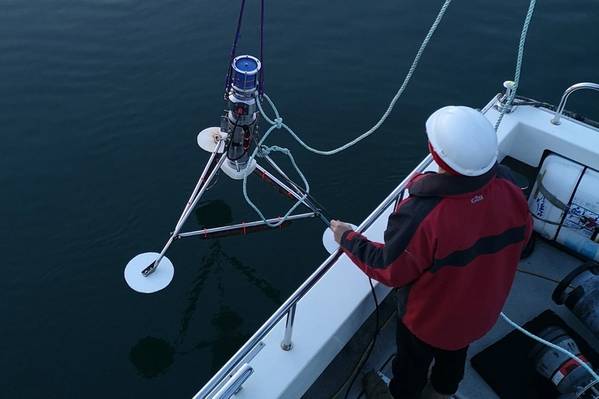
Cabled subsea instrumentation will help increase the accuracy of time-lapse seismic data for Norwegian energy firm Equinor at the giant Johan Sverdrup oil field in the North Sea, about 87 miles west of Stavanger, Norway.
From first production at the development, Equinor plans to use seafloor based seismic cable permanent reservoir monitoring (PRM) technology from Sonardyne International Ltd. to observe what is happening in the reservoir over time to help maximize recovery rates.
While PRM technologies increase the amount and quality of data that operators have about their reservoirs, processing it can sometimes be complicated by changing environmental conditions, such as water velocity and tidal height, at the time each survey is conducted. If those conditions are known, their impact can be readily removed.
To solve this challenge, Equinor has engaged subsea services contractor Subsea 7 to install a Sonardyne Pressure Inverted Echo Sounder (PIES) at 110 - 120 meter water depth at Johan Sverdrup. PIES instruments continuously measure the two-way travel time of sound waves propagated through the water column from the seabed to the sea surface as well as the pressure (depth) at the seabed. This data is then used to calculate a continuous time history of average water velocity and tidal variation throughout the whole water column.
While PIES instruments are already very widely used in marine seismic survey operations, this will be only the second time where PIES units are hardwired into topside power and communication infrastructure, which means Equinor will have instant and continuous access to its data. Conventionally, PIES data is collected acoustically by a passing surface vessel, including unmanned surface vessels.
Shaun Dunn, Global Business Manager for Exploration and Surveillance at Sonardyne, said, “Time-lapse seismic is a key tool to help operators optimize their recovery rates through improved reservoir visualization, modeling and eventually also predictive analytics. By using a PIES, Equinor will have higher repeatability in their seismic data which further supports proactive reservoir management.”
Johan Sverdrup is one of the five largest oil fields on the Norwegian continental shelf, with expected resources of between 2.1—3.1 billion barrels of oil equivalents. Production for Phase One is is expected to begin in late 2019.